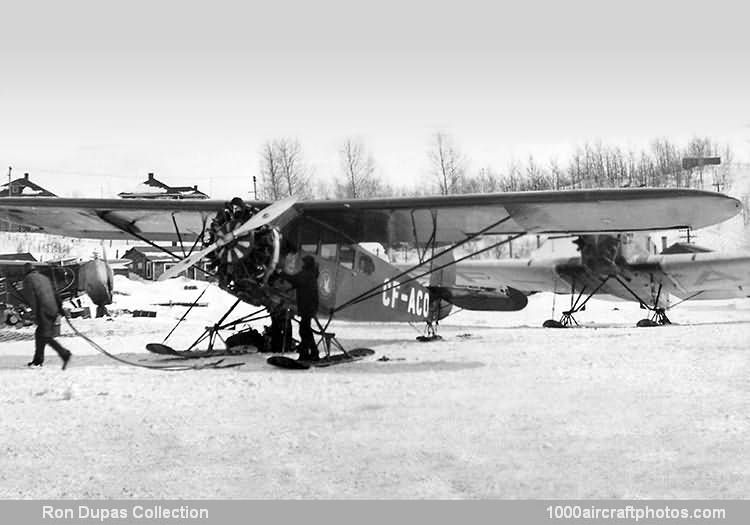12/17/2004. Remarks by Angus Anderson. "The winter operation of aircraft such as the one pictured above in temperatures as low as 30° below zero was most challenging and memorable. Whatever operation I was involved in, the primary consideration was the survival of myself and others with me.
Every time we left on a flight, we made sure that we had enough sleeping bags, emergency food supply, a rifle, an axe, a blow pot that burned gas to heat up the engine in the morning, and an empty 5 gal (20 l) can that we used to drain out the engine oil when we landed and could keep it warm next to a stove or a fire.
Failure to drain the oil could mean that you might spend all the next day trying to warm the engine enough to start it, because with the 120 weight oil in the cylinders, you could hang on the end of the propeller blade and the engine would not turn. In the morning before daylight, I would have to get the blow-pot started and warmed up, ready to warm the engine.
This was accomplished by sitting inside the engine tarp on a bucket, with the blow-pot, in a space approximately 4 ft in diameter and about 5 ft below the engine, for approximately 2 hours, till the engine was warm enough to start. By this time all parts of the engine were generally warm, and the pail of engine oil could be quickly poured into the oil tank.
Then after removing the engine cover, I would climb up into the cockpit and turn on the gas and necessary switches, and prime the engine with the primer pump, which injected about half a cup of gas into all nine cylinders, set the throttle for idle speed, press the starter button and hope it started."
(Angus Anderson was employed by the M & C Aviation Company in Prince Albert, Saskatchewan as an aircraft Maintenance Engineer from 1938 to 1940, and later as a corporate pilot for British American Oil and Gulf Oil until 1970.)
